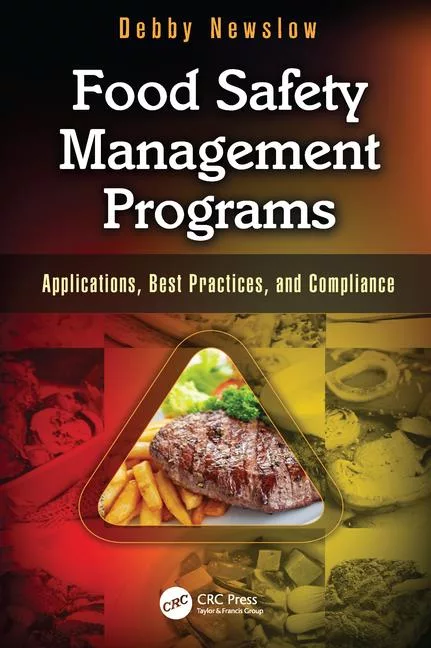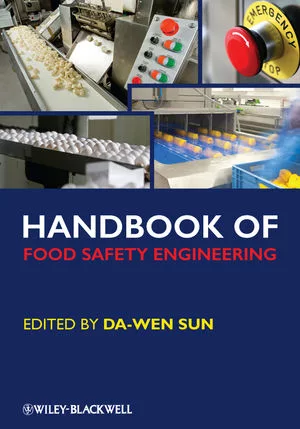Implementing and Following Through with Highly Effective Employee Training and Education

Image credit: Edwin Tan/E+ via Getty Images
In the ever-evolving world of food manufacturing, employee training and education play a pivotal role in achieving operational excellence, maintaining the highest quality standards, ensuring food safety, and establishing a robust food safety culture within an organization. Engaging employees, empowering them with knowledge, and keeping training programs simple yet comprehensive are essential elements for success. This article explores the importance of employee training and education, the key factors for a successful training program, and the specific training requirements, as well as the benefits of in-house training.
The Foundation of Operational Excellence and Food Safety Culture
Employee training and education serve as the foundation for achieving operational excellence and maintaining the highest quality and food safety standards in a food manufacturing organization. It is not merely a regulatory requirement; it is a strategic investment in the organization's future. Effective training empowers employees to perform their roles with confidence, ensuring the safety of the products they produce and the reputation of the company. Moreover, it fosters a strong food safety culture, where employees are fully committed to the principles of food safety, both in their professional and personal lives.
Key Factors in an Excellent Training Program
To establish a highly effective training program, three key factors stand out: engagement, empowerment, and simplicity.
- Engagement: Engaging employees in the training process is crucial. Training sessions should not be monotonous lectures but interactive, hands-on experiences that capture the attention and interest of the learners. Engaged employees are more likely to retain and apply the knowledge gained during training.
- Empowerment: Empowering employees through training means giving them the tools and knowledge they need to perform their jobs effectively and make informed decisions. This empowerment builds confidence and a sense of ownership among employees, making them more proactive in upholding quality and food safety standards.
- Simplicity: While training materials should be comprehensive, they should also be straightforward and easy to understand. Complicated or convoluted training materials can lead to confusion and hinder the effectiveness of the training program. Simplicity in training materials and methods ensures that every employee can comprehend and apply the information.
Documentation and Implementation of Training Programs
A successful training program must be well-documented and systematically implemented. This documentation should outline the necessary competencies for specific duties and the training methods to be applied to personnel carrying out the tasks associated with those duties. It provides a structured approach to ensure that every employee receives the essential training required to perform their role effectively and safely.
Looking for quick answers on food safety topics?
Try Ask FSM, our new smart AI search tool.
Ask FSM →
Additionally, the training program should include provisions for identifying and implementing the need for refresher training. As the food manufacturing industry evolves, so do regulations, technologies, and best practices. Regularly updating and refreshing the knowledge and skills of employees is essential to maintain the highest standards of quality and food safety.
Training Materials and Language Accessibility
It is crucial to provide training materials, the delivery of training, and procedures in languages understood by all staff. In a diverse workforce, ensuring that every employee comprehends the training materials is essential. Furthermore, a verification method should be in place to ensure that employees correctly apply their training in real-world settings. This verification can include practical assessments, simulations, or real-time monitoring.
Quality and Food Safety Training
Various quality and food safety training topics/courses are vital in the food manufacturing industry. Some of the key training areas include:
- Hazard Analysis and Critical Control Points (HACCP): This training is essential for identifying and mitigating food safety hazards throughout the production process.
- Good Manufacturing Practices (GMP): GMP training ensures that employees understand and follow best practices for producing safe and high-quality food products. Various hygiene and food safety topics are covered under GMP training.
- Regulatory Requirements: Training should cover regulatory mandates and other important guidelines such as the Food Safety Modernization Act (FSMA), current Good Manufacturing Practices, Preventive Controls for Human Food/Animal Food, Food Safety Plans, and Preventative Control Qualified Individual (PCQI) training. Additionally, Better Process Control School training (for acidified and low-acid canned foods) and other specialized training topics may be important for compliance.
GFSI "Personal Training" Benchmarking Requirement
For organizations seeking certification under Global Food Safety Initiative (GFSI) schemes like SQF, BRC, IFS, ISO 22000, and FSSC, a specific benchmarking requirement pertains to "personal training." This entails establishing a system to ensure that all employees receive appropriate quality and food safety training, with periodic retraining as needed. The level of training should align with the nature of the employees' activities.
In-House Training: A Valuable Approach
In the world of food manufacturing, there is often a debate between in-house training and external training. While external training can be beneficial, it is essential to recognize the value of in-house training. In-house training allows organizations to include more employees, as external training can be limited by operational needs and costs. When employees learn within the familiar spaces of their workplace, they can better understand and apply the training directly to their tasks. Walking the floor with trainers/professionals and witnessing real-life scenarios can enhance the effectiveness of in-house training.
Takeaway
Employee training and education are the cornerstones of success in the food manufacturing industry. They are not only essential for meeting regulatory requirements but also for achieving operational excellence, maintaining the highest quality standards, ensuring food safety, and fostering a strong food safety culture. By focusing on engagement, empowerment, and simplicity, organizations can develop highly effective training programs that empower their employees to excel.
Documentation and implementation of training programs, language accessibility, and regular updates are essential components of a robust training system. Specific training areas, such as HACCP, GMP, and regulatory compliance, are critical for ensuring food safety and quality. Furthermore, organizations aiming for GFSI certification must meet the benchmarking requirements for personal training.
In-house training, with its emphasis on practical application and cost-effective scalability, presents a valuable approach for equipping employees with the necessary knowledge and skills. In the dynamic and competitive landscape of food manufacturing, investing in highly effective employee training and education is not just a choice; it is a strategic imperative for long-term success.








